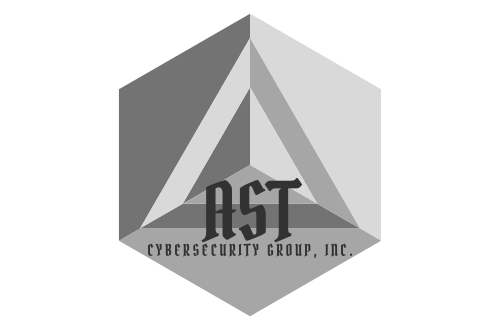A recent study by the Workplace Bullying Institute found that 72% of employees have faced cyberbullying at work. This shows how urgent it is to protect against cyberbullying in the workplace. We know it’s tough for employers to keep their digital workspaces safe, and we’re here to assist.
Cyberbullying in the workplace is a big worry in today’s world. With more people working remotely and using digital tools, the chance of online bullying has gone up. But, we’ve got some practical steps to help keep your employees safe from cyberbullying.
To make your workplace a safe and respectful place, you need to take action. We’ll show you how to develop strong policies and training programs. These steps will help protect your team from online bullying.
Key Takeaways
- 72% of employees have experienced workplace cyberbullying
- Digital safety is crucial in today’s remote work environment
- Effective cyberbullying protection strategies can significantly reduce risks
- Comprehensive policies and training programs are essential
- Creating a culture of respect is key to preventing online harassment
Understanding Workplace Cyberbullying and Its Impact
Cyberbullying at work is a big problem in our digital world. We must know its forms and effects to make workplaces safer. Let’s look at what digital harassment is like in work settings and how it affects workers.
Defining Digital Harassment in Professional Settings
Online harassment at work includes unwanted messages, social media attacks, or sharing private info without permission. It can occur through email, chat apps, or video calls. It’s important to be aware of these harmful behaviors.
Impact on Employee Mental Health and Productivity
Cyberbullying at work can cause stress, anxiety, and depression. Victims might lose focus, miss work, or even quit. This affects both the employee and the company’s success.
Common Forms of Online Workplace Harassment
Here are some common types of cyberbullying at work:
- Sending threatening emails
- Posting embarrassing photos on work platforms
- Excluding coworkers from online work groups
- Spreading rumors through instant messaging
| Harassment Type | Examples | Potential Impact |
|---|---|---|
| Email Bullying | Aggressive messages, constant criticism | Decreased confidence, work avoidance |
| Social Media Attacks | Public shaming, false accusations | Reputation damage, social isolation |
| Digital Exclusion | Ignoring messages, withholding information | Reduced productivity, feeling undervalued |
Legal Requirements for Employers Regarding Digital Safety
A modern office environment depicting a diverse group of employees collaborating around a digital workspace, with subtle elements representing digital safety, such as shields, locks, and secure networks integrated into the scene, soft lighting highlighting a sense of security and teamwork, professional attire.
Employers have a big role in keeping workplaces safe from cyberbullying. It’s important to know the laws to protect employees online. We’ll look at what employers must do to keep their staff safe from online harm.
Laws at the federal and state levels require employers to keep workplaces safe. This includes protecting against digital threats. Not following these rules can lead to legal trouble and harm to the company’s reputation.
To fight cyberbullying, employers should create a detailed anti-harassment policy. This policy should list what actions are not allowed, how to report problems, and what happens if rules are broken. It’s also key to have regular training on staying safe online and being kind in digital communication.
| Legal Requirement | Employer Action |
|---|---|
| Provide a safe work environment | Implement cyberbullying prevention policies |
| Protect employees from harassment | Establish clear reporting procedures |
| Ensure equal employment opportunity | Conduct regular internet safety training |
| Maintain confidentiality | Secure digital communication channels |
By meeting these legal needs, employers not only keep their workers safe but also help create a better work place. It’s always best to act early against cyberbullying rather than dealing with it later.
Creating a Comprehensive Cyberbullying Protection Policy
A strong cyberbullying protection policy is key to safeguarding employees in the digital workplace. We’ll guide you through crafting an effective policy that promotes online behavior guidelines and cyberbullying prevention.
Essential Elements of an Effective Policy
Your policy should clearly define cyberbullying and outline prohibited behaviors. Include examples of unacceptable online conduct and specify consequences for violations. Make sure to address all digital platforms used for work communication.
Enforcement Guidelines and Procedures
Establish a fair and consistent enforcement process. Detail steps for investigating reports, protecting victim privacy, and disciplinary actions. Designate responsible personnel for handling cyberbullying cases and outline their roles.
Documentation and Reporting Protocols
Create user-friendly reporting channels for employees to report incidents. Implement a system to document all reports, investigations, and outcomes. This aids in tracking patterns and evaluating policy effectiveness.
- Provide multiple reporting options (e.g., online form, designated email)
- Ensure confidentiality of reports
- Set clear timelines for addressing complaints
Remember, a well-crafted policy is just the first step. Regular review and updates are crucial to maintain its relevance in the ever-evolving digital landscape.
Implementing Digital Communication Guidelines
We know how vital clear digital communication rules are to protect employees from cyberbullying. By setting these standards, we make our workplace safer for everyone.
Our strategy for social media etiquette is all about respect and professionalism. We teach employees to think before they post. They learn to use the right words and think about how their words might affect others.
To cut down on cyberbullying risks, we’ve made a set of online behavior rules. These cover different parts of digital interaction:
- Respectful communication in all work-related platforms
- Proper use of company social media accounts
- Guidelines for sharing work-related information online
- Protocols for addressing conflicts in digital spaces
Clear guidelines help build a positive digital culture. They set the stage for employees to communicate well while keeping things professional.
| Guideline Category | Key Points |
|---|---|
| Social Media Etiquette | Be respectful, think before posting, use appropriate language |
| Email Communication | Use professional tone, avoid ALL CAPS, respond promptly |
| Video Conferencing | Mute when not speaking, dress appropriately, use virtual backgrounds |
| Instant Messaging | Respect working hours, use emojis sparingly, keep messages concise |
By following these guidelines, we establish a respectful digital communication framework. This helps lower the chance of cyberbullying in our workplace.
Training Programs for Cyberbullying Prevention
We think training is crucial for stopping cyberbullying at work. Our programs help make a safe space for everyone. Here, employees feel safe and ready to help.
Employee Awareness Sessions
Our sessions teach staff how to spot and report cyberbullying. We talk about how online bullies work and how to stay safe online. These sessions are the start of our fight against bullying.
Management Response Training
Leaders are key in stopping cyberbullying. We teach managers to act fast and right when they hear about online bullying. They learn to document incidents, support victims, and follow company rules.
Bystander Intervention Strategies
Teaching bystanders to act is a strong way to fight cyberbullying. We show employees how to step in safely when they see bullying online. This builds a workplace where everyone helps keep it respectful.A modern office environment with a diverse group of employees engaged in an interactive training session, showcasing visuals of cyberbullying awareness materials, such as infographics and digital resources, bright and inviting atmosphere, emphasizing teamwork and support, high-tech elements like laptops and projectors, warm colors to convey a positive learning experience.
| Training Component | Key Focus Areas | Frequency |
|---|---|---|
| Employee Awareness | Identifying cyberbullying, reporting procedures | Quarterly |
| Management Response | Incident handling, policy enforcement | Bi-annually |
| Bystander Intervention | Safe intervention techniques, support strategies | Annually |
With these training programs, we make a team ready to stop cyberbullying. This effort makes our workplace safer for everyone. It’s a big step towards a better digital work environment.
Establishing Secure Online Work Environments
Creating a safe digital workplace is crucial for internet safety and cyberbullying protection. We’ll look at ways to make secure online spaces for your team.
Platform Security Measures
First, choose work platforms with top-notch security. Look for tools with encryption, two-factor auth, and regular updates. Also, train staff to use strong passwords and spot phishing attempts.
Communication Channel Management
Set clear rules for work chats and emails. Define what’s okay to share and what’s not. Use closed groups for sensitive talks. This stops cyberbullying and keeps conversations professional.
Digital Privacy Protection
Teach employees about online privacy. Show them how to adjust social media settings and manage their digital footprint. Give tips on safe browsing and file sharing. This protects against personal info leaks that could lead to cyberbullying.
By taking these steps, you’ll create a work environment where everyone feels safe online. It’s all about balancing open communication with smart protection measures.
Response Protocols for Online Harassment Incidents
When online harassment happens, quick action is key. We’ve set up response protocols to help employers deal with internet trolling. These steps help protect your employees and keep your work environment positive.
First, document the incident. Save any screenshots, emails, or messages related to the harassment. This evidence is crucial for legal actions. Next, reach out to the targeted employee. Offer support and tell them their safety is your main concern.
Then, investigate who is behind the harassment. If it’s someone inside your company, follow your disciplinary rules. For outside threats, think about involving the police. Always keep everyone updated on your investigation’s progress.
- Block the harasser’s access to company platforms
- Update security settings to prevent future incidents
- Provide counseling services for affected employees
Regular training can help your team spot and report internet trolling. Being proactive makes your workplace a safe and respectful place online.
Supporting Affected Employees and Recovery Measures
Cyberbullying in the workplace is a serious issue. It’s vital to support employees who are affected. We aim to create a safe space and offer resources for recovery. Let’s look at ways to help employees and reduce cyberbullying’s effects.
Immediate Support Resources
Acting fast is crucial when cyberbullying happens. We offer immediate support through confidential channels and dedicated HR staff. This lets employees get help without fear.
A 24/7 helpline is available for guidance and emotional support. It’s there when you need it most.
Long-term Recovery Strategies
We have long-term plans to help employees heal. These include flexible work options, mentorship, and team activities. Regular check-ins provide ongoing support and help build confidence back.
We also update our policies to prevent future bullying. Our goal is to create a respectful work culture.
Professional Counseling Services
Professional counseling is key for recovery. We offer free, confidential counseling to affected employees. These sessions help deal with emotional trauma and find coping strategies.
Group therapy is also available. It’s a safe place for sharing and finding support with others.
Our goal is to reduce cyberbullying’s impact and create a positive work environment. We’re committed to supporting our employees’ well-being. No one should face these challenges alone.
Conclusion
Cyberbullying in the workplace is a big problem that needs our focus. We’ve shared important steps employers can take to make work safer online. By making strong policies, companies can start to fight cyberbullying.
Training is key to teaching employees how to handle online bullying. Having safe online spaces and clear rules helps too. These steps help make work a place where everyone feels respected and safe.
It’s also important to support workers who face cyberbullying. Giving them quick help and long-term support shows we care about their well-being. By doing these things, employers can make sure cyberbullying doesn’t happen at work.
Let’s work together to make our workplaces free from online bullying. We can create a better, safer digital work environment for everyone. Contact AST Cybersecurity today and let us help you put cyberbullying protections in place to keep your employees safe!

